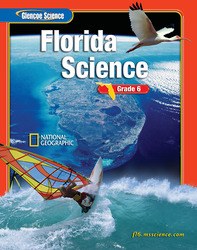1.
<a onClick="window.open('/olcweb/cgi/pluginpop.cgi?it=gif::::/sites/dl/free/007869387x/165465/531_370_q1_q2.gif','popWin', 'width=NaN,height=NaN,resizable,scrollbars');" href="#"><img valign="absmiddle" height="16" width="16" border="0" src="/olcweb/styles/shared/linkicons/image.gif"> (9.0K)</a>
SC.D.1.3.2 A) troposphere B) thermosphere C) ionosphere D) stratosphere 2.
<a onClick="window.open('/olcweb/cgi/pluginpop.cgi?it=gif::::/sites/dl/free/007869387x/165465/531_370_q1_q2.gif','popWin', 'width=NaN,height=NaN,resizable,scrollbars');" href="#"><img valign="absmiddle" height="16" width="16" border="0" src="/olcweb/styles/shared/linkicons/image.gif"> (9.0K)</a>
SC.D.1.3.2 A) They absorb ozone. B) They filter out gamma rays. C) They form rain clouds. D) They reflect radio waves. 3.
SC.D.1.3.3 A) oxygen B) carbon dioxide C) nitrogen D) water vapor 4.
SC.D.1.3.3 A) a front formed when warm air advances into a region of colder air B) a front formed when a cold air mass advances and pushes under a warm air mass C) a front formed when a warm air mass and a cold air mass meet but neither advances D) a front formed when a fast-moving cold front overtakes a slower warm front 5.
<a onClick="window.open('/olcweb/cgi/pluginpop.cgi?it=gif::::/sites/dl/free/007869387x/165465/531_370_q5_q6.gif','popWin', 'width=NaN,height=NaN,resizable,scrollbars');" href="#"><img valign="absmiddle" height="16" width="16" border="0" src="/olcweb/styles/shared/linkicons/image.gif"> (6.0K)</a>
SC.D.1.3.3 A) February B) June C) July D) November 6.
<a onClick="window.open('/olcweb/cgi/pluginpop.cgi?it=gif::::/sites/dl/free/007869387x/165465/531_370_q5_q6.gif','popWin', 'width=NaN,height=NaN,resizable,scrollbars');" href="#"><img valign="absmiddle" height="16" width="16" border="0" src="/olcweb/styles/shared/linkicons/image.gif"> (6.0K)</a>
SC.D.1.3.3 A) 2.5 inches B) 4.25 inches C) 4 inches D) 5 inches 7.
SC.D.1.3.3 A) the amount of water vapor in the atmosphere B) the temperature at which air is saturated and condensation occurs C) the current condition of the atmosphere D) the measure of the amount of water vapor that is present compared to the amount that could be held at a specific temperature 8.
SC.D.1.3.3 A) cirrostratus B) cumulonimbus C) altocumulus D) altostratus 9.
SC.D.1.3.3 A) transpiration B) runoff C) condensation D) evaporation 10.
SC.D.1.3.3 A) from an area of high pressure to an area of low pressure B) from an area of low pressure to an area of high pressure C) east to west D) west to east
















